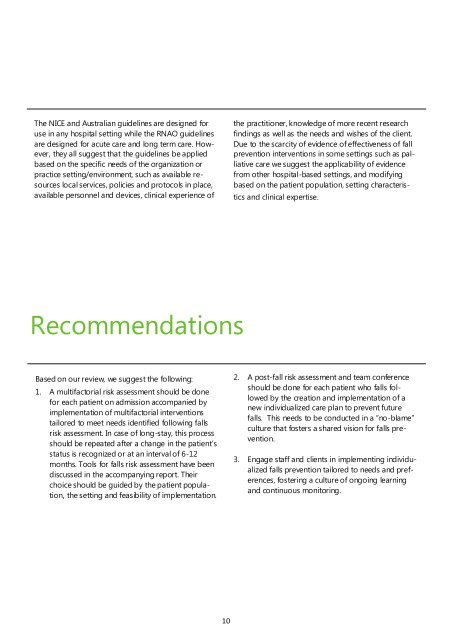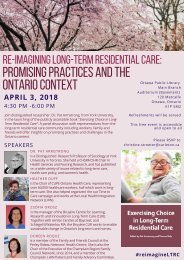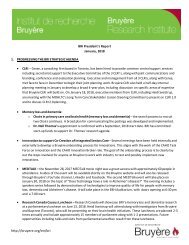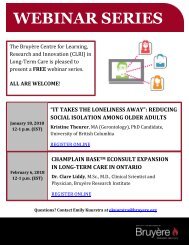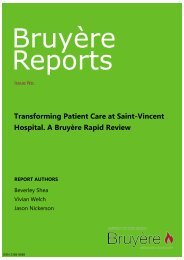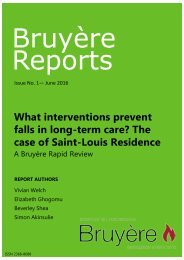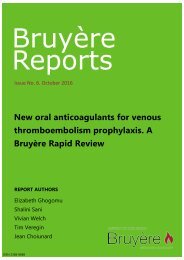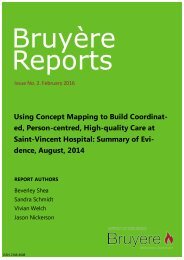Falls Prevention in Continuing Care
You also want an ePaper? Increase the reach of your titles
YUMPU automatically turns print PDFs into web optimized ePapers that Google loves.
The NICE and Australian guidel<strong>in</strong>es are designed for<br />
use <strong>in</strong> any hospital sett<strong>in</strong>g while the RNAO guidel<strong>in</strong>es<br />
are designed for acute care and long term care. However,<br />
they all suggest that the guidel<strong>in</strong>es be applied<br />
based on the specific needs of the organization or<br />
practice sett<strong>in</strong>g/environment, such as available resources<br />
local services, policies and protocols <strong>in</strong> place,<br />
available personnel and devices, cl<strong>in</strong>ical experience of<br />
the practitioner, knowledge of more recent research<br />
f<strong>in</strong>d<strong>in</strong>gs as well as the needs and wishes of the client.<br />
Due to the scarcity of evidence of effectiveness of fall<br />
prevention <strong>in</strong>terventions <strong>in</strong> some sett<strong>in</strong>gs such as palliative<br />
care we suggest the applicability of evidence<br />
from other hospital-based sett<strong>in</strong>gs, and modify<strong>in</strong>g<br />
based on the patient population, sett<strong>in</strong>g characteristics<br />
and cl<strong>in</strong>ical expertise.<br />
Recommendations<br />
Based on our review, we suggest the follow<strong>in</strong>g:<br />
1. A multifactorial risk assessment should be done<br />
for each patient on admission accompanied by<br />
implementation of multifactorial <strong>in</strong>terventions<br />
tailored to meet needs identified follow<strong>in</strong>g falls<br />
risk assessment. In case of long-stay, this process<br />
should be repeated after a change <strong>in</strong> the patient’s<br />
status is recognized or at an <strong>in</strong>terval of 6-12<br />
months. Tools for falls risk assessment have been<br />
discussed <strong>in</strong> the accompany<strong>in</strong>g report. Their<br />
choice should be guided by the patient population,<br />
the sett<strong>in</strong>g and feasibility of implementation.<br />
2. A post-fall risk assessment and team conference<br />
should be done for each patient who falls followed<br />
by the creation and implementation of a<br />
new <strong>in</strong>dividualized care plan to prevent future<br />
falls. This needs to be conducted <strong>in</strong> a “no-blame”<br />
culture that fosters a shared vision for falls prevention.<br />
3. Engage staff and clients <strong>in</strong> implement<strong>in</strong>g <strong>in</strong>dividualized<br />
falls prevention tailored to needs and preferences,<br />
foster<strong>in</strong>g a culture of ongo<strong>in</strong>g learn<strong>in</strong>g<br />
and cont<strong>in</strong>uous monitor<strong>in</strong>g.<br />
10


